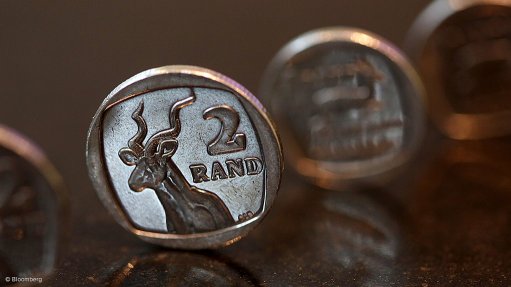EIUG outlines supply- and demand-side options for easing loadshedding crisis
The Energy Intensive Users Group (EIUG) has confirmed that its large mining and industrial members have a 4 GW-plus pipeline of generation projects that can be connected to the grid over the next five years to help close the electricity supply gap. However, it argues that other supply- and demand-side interventions are urgently required to reduce the intensity of both loadshedding and load curtailment.
“We are of the view that Eskom and government alone will not be able to resolve these issues soon and, hence, other options need to be explored considering that this is a crisis and business-as-usual contributions are no longer adequate,” CEO Fanele Mondi tells Engineering News.
Mondi believes there is particular potential for South Africa to support an “aggressive roll-out” of rooftop solar in the commercial and residential sectors over the short-term and that this should be incentivised as a priority intervention.
Rooftop solar photovoltaic (PV) systems, he argues, are not constrained by the same permitting, funding and grid-access delays that are currently afflicting utility scale projects.
In December, the Department of Mineral Resources and Energy announced that only six utility-scale PV projects, with a combined capacity of just 860 MW, had advanced to preferred-bidder status, following a bidding round that had been expanded to procure 4 200 MW of both PV and wind projects. Not one of the 23 wind projects that bid for the round’s 3 200 MW wind allocation was appointed, owing to grid constraints.
“Economic incentives and net metering will help to expedite the roll-out to reach a stage where Eskom’s pumped-storage schemes can be topped up from new rooftop PV generation, which will have a positive double whammy effect on the current situation.”
Eskom already has net-billing tariffs for agriculture, commercial and industrial customers that provide a credit for energy exported at the same energy rate the customer pays for consumption.
However, the National Energy Regulator of South Africa (Nersa) still needs to approve the residential tariff, dubbed Homeflex, which will allow Eskom to offer net-billing to residential customers.
Eskom has also finalised its standard offer, which extends a three-year price for the purchase of power and it is understood the recent tariff hike approved by Nersa includes revenue specifically for this offer, which could evolve into a national feed-in tariff in future.
In a recent update, the National Energy Crisis Committee (NECOM) indicated that the standard offer had the potential to secure 1 600 MW in the near-term.
Mondi believes there is also potential for large power users to undertake co-ordinated maintenance so as to manage demand in a way that provides Eskom with space to do the maintenance the utility needs to perform to improve the energy availability factor of its coal power stations.
In parallel, however, the EIUG says action needs to be taken to expedite the execution of public and private generation projects, including by strengthening and expanding the grid and ancillary services to maximise renewable energy penetration and by removing any remaining regulatory constraints.
Mondi also believes more could be done to encourage investment in energy storage through financial incentives and by creating ancillary service products to be sold to the system operator.
“This can be used to reduce demand during peak periods and stabilise the grid.”
Given that EIUG members collectively account for over 40% of the electrical energy consumed, the organisation also has strong views on the possible demand-side instruments that could be deployed.
“Demand-side management is the fastest and cheapest response, and the previous demand-side management programme was successful in saving significant energy, which eased the pressure on the grid, allowing for lower stages of load shedding and/or space for maintenance,” Mondi highlights.
To be effective, however, the EIUG says the measures need to be economically viable and implemented in ways that are least disruptive to production.
Most EIUG members are already participating in various forms of demand reduction, which involves shifting load, as well as various demand-response schemes. They are also exposed to load curtailment, which Mondi describes as “highly disruptive”.
In addition, these large operations typically have energy efficiency programmes involving lighting, ventilation, air conditioning and cooling systems, with some of the process efficiencies and the purchase of efficient equipment having benefitted from domestic incentives.
Mondi believes that NECOM Workstream 5, which deals with demand measures, should evaluate the implementation of various other demand-side interventions, including:
- increasing participation in demand-response schemes through better incentivised rates;
- a power buy-back scheme that does not create market distortions or unduly enrich participants;
- introducing time-of-use tariffs for residential and small business customers to send the correct pricing signals about the cost of using electricity during the morning and evening peaks with the aim of shifting some consumption to other periods of the day; and
- ensuring that Eskom’s notified maximum demands are adhered to by municipalities through the management of customer connections, the reduction of illegal connections and by installing power factor correction equipment.
There is also potential, Mondi believes, to revive some form of energy conservation scheme, drawing lessons from the scheme implemented in 2009/10.
“It is perhaps time to revisit the energy conservation scheme and evaluate its productivity impact versus the costs and risks (including to personal safety and equipment) associated with frequent and unpredictable disruptions brought by load curtailment.
“At the rate that loadshedding and load curtailment are being used, to some extent it may be considered a de facto energy conversation scheme as it is no longer used for random emergency situations but is almost a daily occurrence and likely to be so into the future.”
Article Enquiry
Email Article
Save Article
Feedback
To advertise email advertising@creamermedia.co.za or click here
Comments
Press Office
Announcements
What's On
Subscribe to improve your user experience...
Option 1 (equivalent of R125 a month):
Receive a weekly copy of Creamer Media's Engineering News & Mining Weekly magazine
(print copy for those in South Africa and e-magazine for those outside of South Africa)
Receive daily email newsletters
Access to full search results
Access archive of magazine back copies
Access to Projects in Progress
Access to ONE Research Report of your choice in PDF format
Option 2 (equivalent of R375 a month):
All benefits from Option 1
PLUS
Access to Creamer Media's Research Channel Africa for ALL Research Reports, in PDF format, on various industrial and mining sectors
including Electricity; Water; Energy Transition; Hydrogen; Roads, Rail and Ports; Coal; Gold; Platinum; Battery Metals; etc.
Already a subscriber?
Forgotten your password?
Receive weekly copy of Creamer Media's Engineering News & Mining Weekly magazine (print copy for those in South Africa and e-magazine for those outside of South Africa)
➕
Recieve daily email newsletters
➕
Access to full search results
➕
Access archive of magazine back copies
➕
Access to Projects in Progress
➕
Access to ONE Research Report of your choice in PDF format
RESEARCH CHANNEL AFRICA
R4500 (equivalent of R375 a month)
SUBSCRIBEAll benefits from Option 1
➕
Access to Creamer Media's Research Channel Africa for ALL Research Reports on various industrial and mining sectors, in PDF format, including on:
Electricity
➕
Water
➕
Energy Transition
➕
Hydrogen
➕
Roads, Rail and Ports
➕
Coal
➕
Gold
➕
Platinum
➕
Battery Metals
➕
etc.
Receive all benefits from Option 1 or Option 2 delivered to numerous people at your company
➕
Multiple User names and Passwords for simultaneous log-ins
➕
Intranet integration access to all in your organisation





















